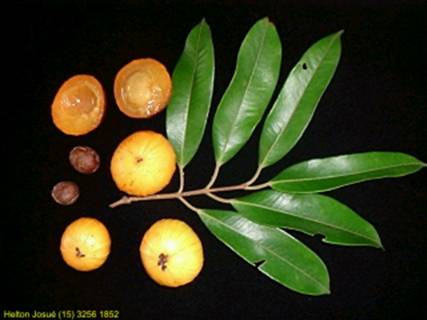PLINIA EDULIS
POPULAR NAME: CAMBUCÁ OR CAMBUCABA
MYRTACEAE

INDIGENOUS NAME: Cambuci comes from the Tupi-Guarani and means "fruit of nurse or suck" because the pulp must be sucked skin.
Origin: Zone of the coastal Atlantic Forest, Brazil
Characteristics:
The tree reaches heights of
Planted in
the site of Frutas Raras:
November
Tips for
cultivation:
Slow-growing tree that resists low temperatures (to -4°C (25°F)), and grows
at altitudes above
Propagation:
Seeds rounded, large, purple and recalcitantes (germinative power loses in
20 days) to germinate
Planting:
Can be planted in full
sun and in forests with large trees well spaced.
Space 6 x 6 m (10 to 20 feet).
Add to the hole 1 kg
of lime and 1 kg of ash and
Cultivating: Making only forming pruning of the crown and remove branches that were grown from the base of the trunk or interior branchens which are crossing the crown that must be well ventilated to bear fruit. Fertilize with organic compost, may be (6 liters) poultry litter + 50 g of NPK 10-10-10 doubling that amount every year until the 3rd year.
Uses: The fruit has a taste like papaya and mango together, and ideal for use in-natura.
Flowering in the site of Frutas Raras: Not yet occurred.
Fruiting in the site of Frutas Raras: Not yet occurred.
BUY THE BOOK “COLECIONANDO FRUTAS”
Back to the seedlist (English) or back to Myrtaceae (Portuguese)